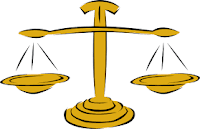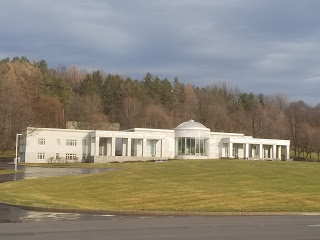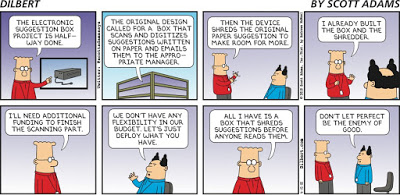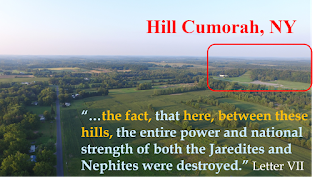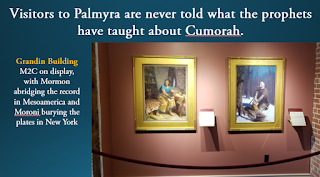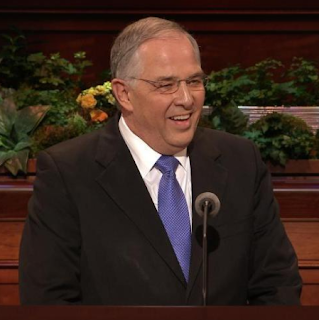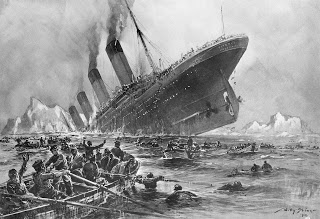Why M2C intellectuals persist
While there is no one answer, these factors play a role.
1. The M2C intellectuals think the evidence disproves New York and proves Mesoamerica (archaeology, anthropology, geology, etc.).
2. The M2C intellectuals think the prophets were merely expressing their opinions, so it’s okay to repudiate what they taught.
3. The M2C intellectuals have established an elaborate academic framework around M2C that they cannot easily restructure or dismantle.
4. The M2C intellectuals have trained their minds to think M2C and are unable, psychologically, to see the issues differently. The psychological box they are in has spread throughout the Church because these intellectuals have imprinted the M2C catechism on thousands of students in CES and BYU, as well as every Church member who views M2C artwork in lesson manuals, Church buildings, Visitors Centers, etc. To unwind all of this is unthinkable for the M2C intellectuals who have perpetrated M2C.
_____
Let’s look at factor 4, which I describe with the shorthand term Mesomania.
It is not easy to persuade active, faithful LDS that the prophets and apostles are wrong.
Even after decades of concerted effort through CES, BYU, and COB Departments (History, Correlation, Missionary, Curriculum, etc.), the M2C intellectuals have not persuaded all members of the Church that the prophets were wrong. In fact, the tide may be turning.
The M2C intellectuals have long felt under attack by non-LDS scholars who find zero connection between Mesoamerican culture and the Book of Mormon. M2C has long been an obstacle for investigators who know what non-LDS scholars have said. That obstacle is even greater now with the Internet, as we see with the sharp decline in convert baptisms among English-speaking, Internet-accessing investigators.
Lately, more and more LDS people are reaching the same conclusion as the non-LDS scholars. Because BYU, CES and COB have so adamantly promoted M2C, the cognitive dissonance continues to build. People who leave the Church cite this as a major reason for their decision.
The whole situation is a tragic fulfillment of Joseph Fielding Smith’s prophetic warning that M2C would cause members to become confused and disturbed in their faith in the Book of Mormon.
And yet, the M2C intellectuals persist. Why?
_____
I think the underlying factor for the persistence of M2C is #1; i.e., they think the evidence disproves the New York Cumorah.
Let’s set aside the teachings of the prophets for a moment and look at what the M2C intellectuals have been taught about the evidence.
First, the only reason M2C intellectuals focus on Mesoamerica is because of the false tradition that Joseph Smith wrote or endorsed the anonymous articles in the 1842 Times and Seasons. These intellectuals have worked for decades to vindicate what they thought Joseph taught in 1842, to the point where they reject what he (and all the other prophets and apostles) actually did teach.
Second, to vindicate the anonymous articles, M2C intellectuals adopted an interpretation of the text that describes Mesoamerica.
Third, today’s M2C intellectuals have been taught that “correspondences” between Mayan culture and their interpretation of the text constitute evidence. John Sorenson is probably the best-known advocate of this approach, as exemplified by his book, Mormon’s Codex. The “correspondences” approach is how we have PhD experts in Mesoamerican history/culture coming up with all kinds of “correspondences” that confirm their biases.
It’s obvious to anyone who doesn’t share the M2C bias that these “correspondences” are illusory. They are characteristics of all, or most, human cultures around the world and throughout history. Like the interpretations of the geographical passages in the text, these “correspondences” could be found literally anywhere in the world.
_____
Because the text and the “correspondences” can be found anywhere in the world, why do the M2C intellectuals utterly reject the New York Cumorah?
The answer is found in a single paragraph on pages 81-2 in David Palmer’s book, In Search of Cumorah.
Prior to 1,000 A.D., the most advanced culture in the United States was that of the “moundbuilders.” Their very impressive mounds throughout the eastern United States were the subject of curiosity, looting, and debate from the time of the colonists to the time of Joseph Smith. As previously mentioned, they figured into Mormon church history during the march of Zion’s camp through Ohio and Illinois. Though Joseph Smith took an interest in them, he never equated them with Book of Mormon cities or events, as he later would do with ruins in Mesoamerica.
There you have it.
The basic premise of M2C.
Everything else published by the M2C citation cartel on this topic is pure confirmation bias, intended to validate Palmer’s thesis.
And yet, Palmer’s thesis was wrong on both counts.
Whether Palmer knew about it or not, he didn’t tell readers that Joseph did actually equate the moundbuilders [Now called Hopewells] to the Book of Mormon during Zion’s camp, as well as later in Nauvoo.
While traversing Ohio, Indiana and Illinois during Zion’s Camp, Joseph Smith explained to the Brethren that they were crossing the plains of the Nephites. He wrote to Emma, describing what he was seeing: “The whole of our journey, in the midst of so large a company of social honest men and sincere men, wandering over the plains of the Nephites, recounting occasionaly [sic] the history of the Book of Mormon, roving over the mounds of that once beloved people of the Lord, picking up their skulls & their bones, as a proof of its divine authenticity.”
http://www.josephsmithpapers.org/paper-summary/letterbook-2/62
These plains are mentioned three times in the text: i.e., “meet them upon the plains between the two cities” (Alma 52:20); “pitch their tents in the plains of Nephihah” (Alma 62:18) and “battle against them, upon the plains” (Alma 62:19). The Jaredites referred to the “plains of Agosh” (Ether 14:15-16) and the “plains of Heshlon” (Ether 13:28-29).
Palmer’s claim that Joseph equated the ruins in Mesoamerica with the Book of Mormon is based on the anonymous Times and Seasons articles, which were written by anyone but Joseph Smith, Jr.
Confirmation bias, even when it seeks to validate false premises is so powerful that it leads faithful members of the Church to reject the prophets if the teachings of the prophets contradict the bias.
As President Ezra Taft Benson warned, “The learned may feel the prophet is only inspired when he agrees with them, otherwise the prophet is just giving his opinion—speaking as a man…
https://www.lds.org/manual/teachings-of-presidents-of-the-church-ezra-taft-benson/chapter-11-follow-the-living-prophet?lang=eng_____
Palmer’s book contains an entire chapter on the New York model. On page 80, he claims that “there are a number of other criteria that are definitely not satisfied [by the New York model]:
– near a narrow neck of land
– the presence of fountains
– in a land of volcanoes susceptible to earthquakes
– in a temperate climate with no cold or snow
– the hill must be a significant landmark (it only stnads out because of the monument of Moroni on top)
– the abundance of water must provide a military advantage
– near the eastern seacoast
– on a coastal plain, and possibly near other mountains and valleys
– there is an escape route to the land southward
– the hill must be large enough to provide a view of hundreds of thousands of bodies
By now, I trust readers can see the logical and factual fallacies in these “criteria” so I won’t go through them. But you can see how an M2C intellectuals who accepts these “criteria” would reach the same conclusion Palmer did.
To be fair, Palmer published this book in 1981. Quite a bit of work has been done on the Hopewell in the ensuing 37 years.
According to the Book of Mormon, the Nephites were in a constant state of warfare and retreat from Zarahemla and Bountiful to Cumorah from the time Mormon became their leader until his death. This is roughly 300-400 A.D.
The archaeological record shows that Hopewellian societies in Ohio also ended around 350-400 A.D. Between 300-400 A.D., Hopewellian residential sites were aggregated into defensive, often enclosed communities that were formed on the margins of the lands used by earlier generations. The inhabited valleys were abandoned, and smaller and smaller groups migrated to Western New York, where there are dozens of sites featuring Hopewellian artifacts, including weapons.
Soon we’ll start going through this archaeological evidence in more detail.
In my view, though, it is more important for members of the Church to accept the teachings of the prophets on faith than to decide whether or not to accept the prophets based on whether we agree with them.
If the M2C intellectuals took the same approach, they would find a way to dismantle their M2C contraption and help unify Church members instead of dividing them.
Source: Book of Mormon Wars
